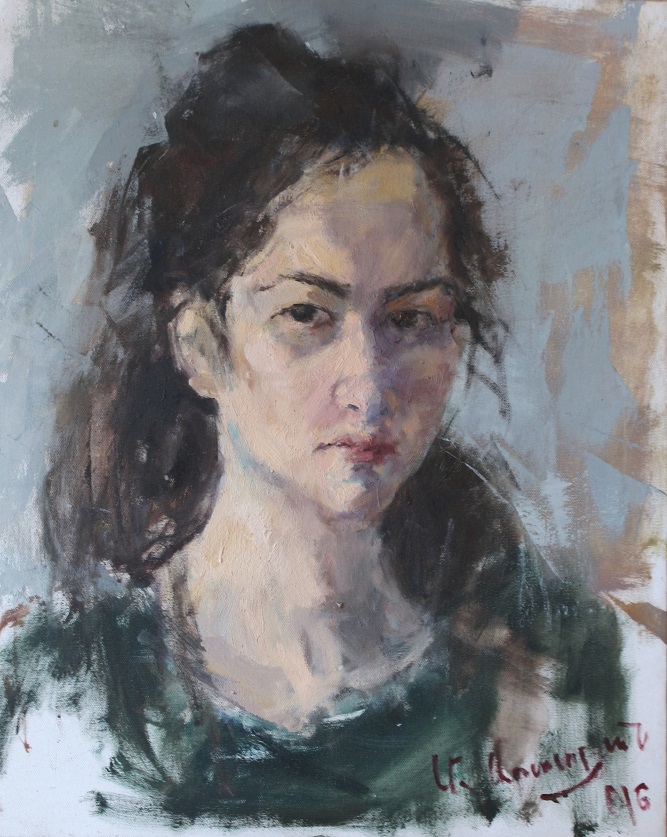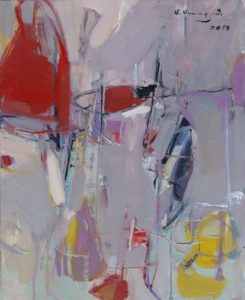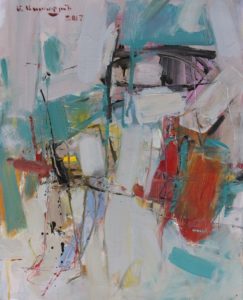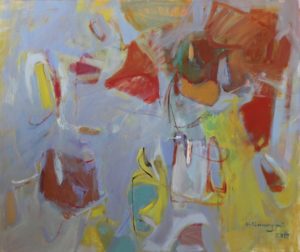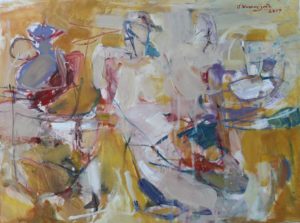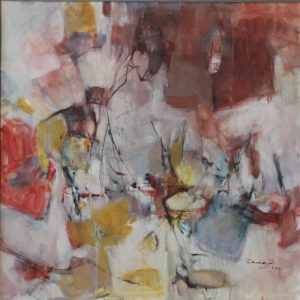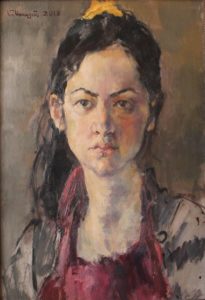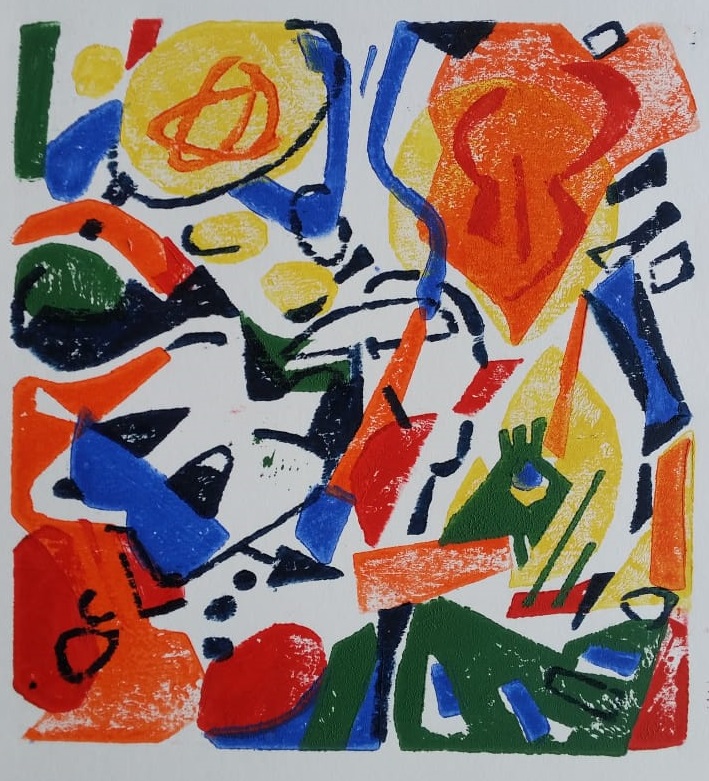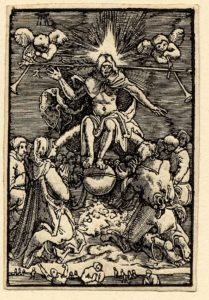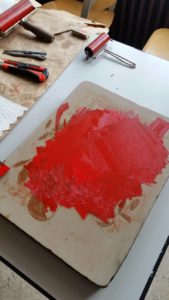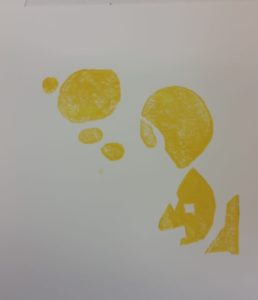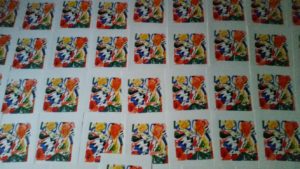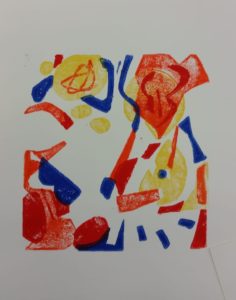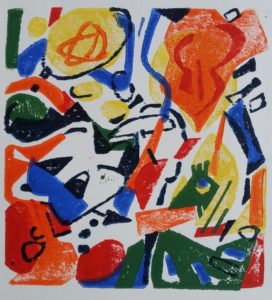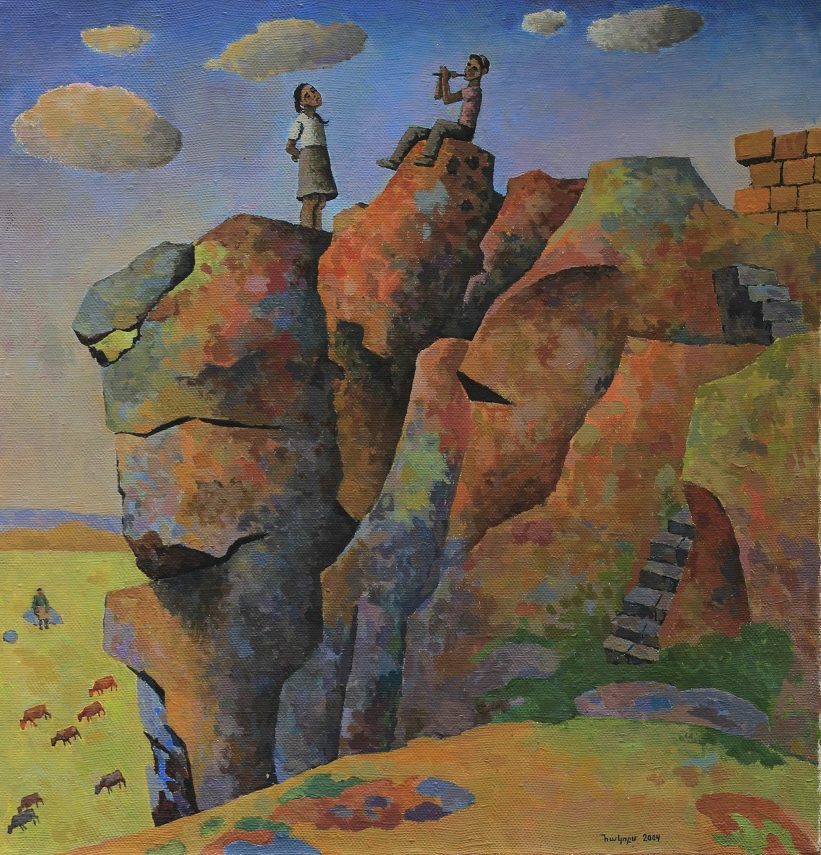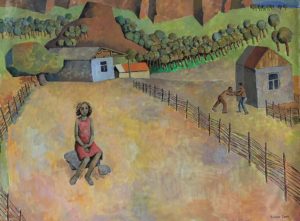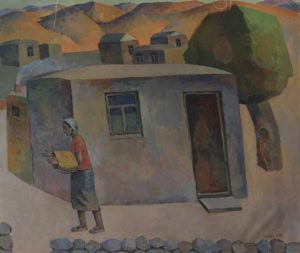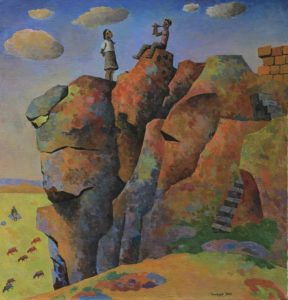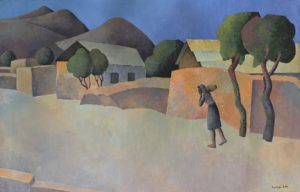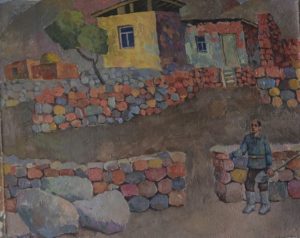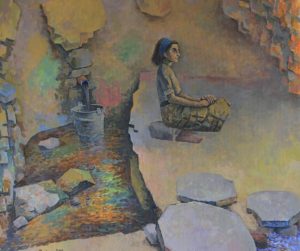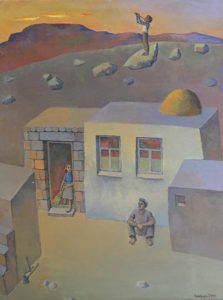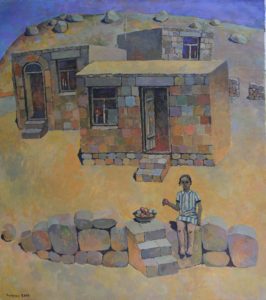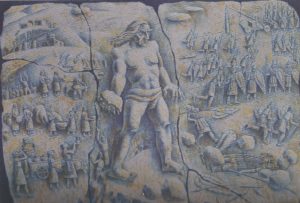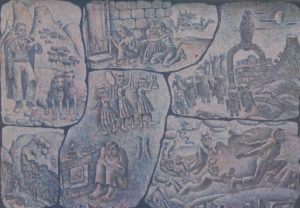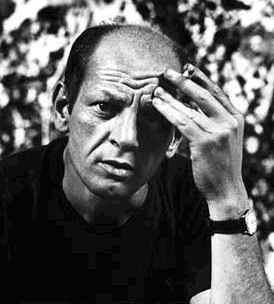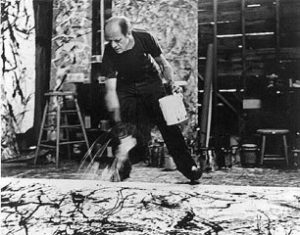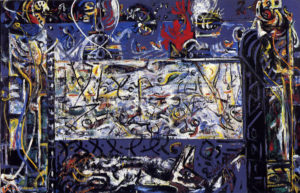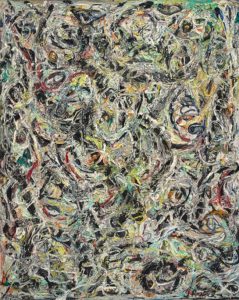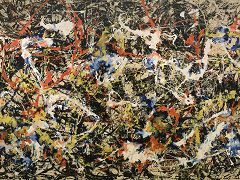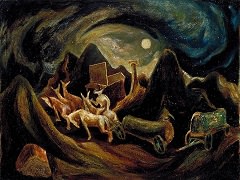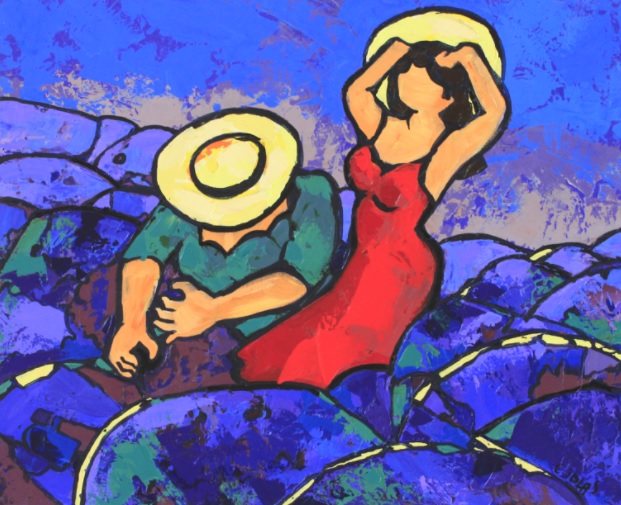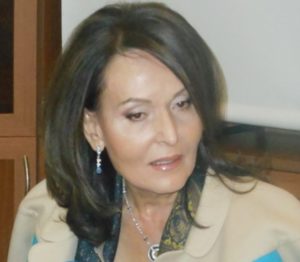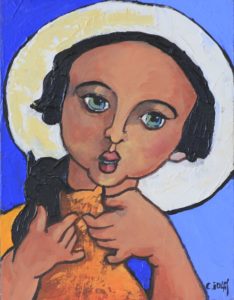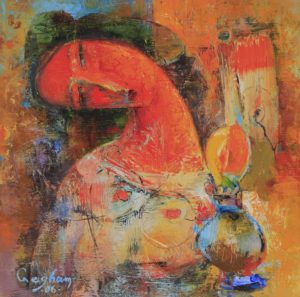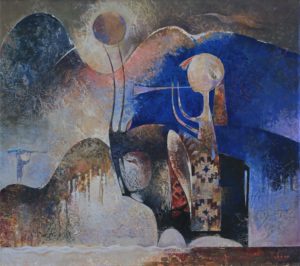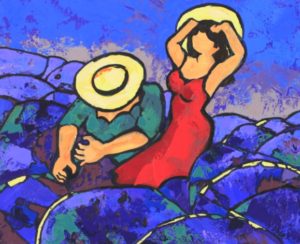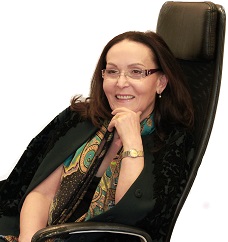Working with a Living Artist
Many wise and knowledgeable collectors and action houses spend countless hours looking and hunting for that piece of art treasured by many and probably painted by a deceased artist. Even at Collectors Galleries, I frequently get asked the question, how old is this artist? Meaning, will he pass away soon? Will my piece of art appraise once the artist is gone? While those questions are important, and a reality in the finances of art collecting, the value of working with a living artist is priceless, and I have a true story to share.
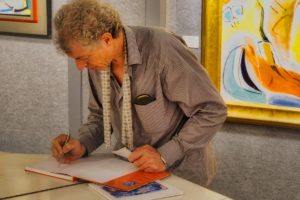
In 2017, for the second year in a row, Cristian Korn, the star of Collectors Galleries, came from Germany to the gallery in Carmel for his second art reception. His first trip to the Gallery had been in 2016 when he met many of the collectors and appreciators of his works; many of us becoming instant friends and family to the artist. One of those was Tamara’s dog. Tamara, owner of the gallery, hosts Cristian at her house when he comes to visit.
On that first night that Cristian stayed at her house, he was awoken by a snoring sound in his room. After looking around and under the bed he finally found Jack, a 7-year-old West Highland Terrier, who became Cristian’s roommate for the next remaining two weeks of his visit at the house.

Jack was born in the US and had been adopted by Tamara’s daughter as a gift to her children while they were living in Mexico. Upon the family’s return to Carmel, Jack was given to Tamara as she had a much larger state for Jack to play. This means that Jack flew from Texas to Mexico City and back to Carmel, California.
A typical Westie, he began guarding his mama and her property against the many different animals in the area. As time passed, Tamara had become too busy at the gallery, so she had begun to bring Jack to work with her. Every day, Jack and Tamara would come to work and greet the clients together.
Cristian, upon meeting his new friend, was surprised at Jack’s loyalty and character. Cristian started making drawings and sketches of Jack in the house. The Cristian-Jack relationship inspired a beautiful series of works painted by Cristian between 2016 and 2017 called, “Le Mansion de Jack.”
Upon Cristian’s return to the gallery in 2017 he reconnected with all his friends and collectors, but he especially reconnected with Jack, who began snoring while sharing his room again with Cristian.
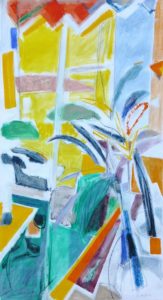
Jack was a real joy at the gallery. He changed the daily routine and brightened every day with his loving playful attitude. He was full of facial expressions, looking especially charming whenever he was disciplined and given time out. He shared my chair and trained me to sit just on the edge as he needed the rest of the chair for his daily rest. Being mostly a cat lover myself, this was my first time taking the time to make the acquaintance and the friendship of dog.

Jack quickly stopped being just a dog and became a co-worker, a friend, part of the team, and one of our most treasured arts at the gallery.
So, in 2017, 2 days after Cristian’s arrival, Jack sprang out of the gallery chasing after a dog and was fatally hit by a car driving too fast down San Carlos St. I picked him up from the street and handed him over to Cristian so I could drive to the nearest pet hospital to get Jack some help, but, Jack did not make it. He passed away on Sunday August 13th 2017, 6 days away from the Gallery’s biggest event of the year, Cristian’s art reception.
Needless to say, this tragic event changed our lives and our perspective of friendship, camaraderie, love and art. I understood that love and friendship come in different forms, and that something so little can have such presence and personality. Upon Jack’s passing I felt deep respect and honor to have met him. It was truly as if an old, wise friend had passed.
 The night of Jack’s passing, friends and family gathered around him for a last good-bye. We brought flowers, tears, and a large stone to serve as his headstone. On it, we all wrote our own unique words of parting love and gratitude. Jack had been the matchmaker between me and my boyfriend. Tamara wrote in beautiful poetry to Jack.
The night of Jack’s passing, friends and family gathered around him for a last good-bye. We brought flowers, tears, and a large stone to serve as his headstone. On it, we all wrote our own unique words of parting love and gratitude. Jack had been the matchmaker between me and my boyfriend. Tamara wrote in beautiful poetry to Jack.
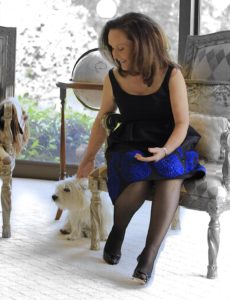
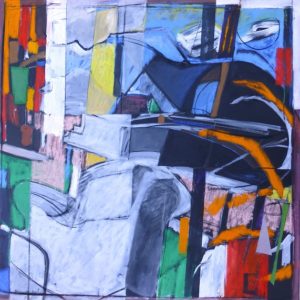
Cristian, of course, during his grieving process, went home and painted his memories of Jack in Canvas, and “Le Mansion San Jack” was born. We all paid our tribute to Jack in our own way. It was then that I realized the priceless importance of art and of working with a living artist. Christ himself even said, “There is nothing like the living word.” Jack, through all of our differing words and the memories in them, lives on.
This story about Jack also brings us to a question of art and transcendence. Why do we collect art of dead masters? Does art exist only as something that has captured the past, or could it be that, just like Cristian, artists have eloquently captured an instant of time? As artist becomes historian and visionary could it be only a curiosity of the past?
What brings us to forgotten pasts? In the case of Da Vinci, it could be that he transcended himself, leaving pieces of living soul in his art, giving or leaving us glimpses of eternity and possibility in canvas that attract us even today. Da Vinci himself advised, “Avoid studies of which results die with the worker.” Is he pointing out this transcending with his work and his words?
Working with a living artist means you have a brainstorming companion who speaks the words and experiences of the time. Collecting their works means somehow, both of you understand each other. The similarities of existence are recognized by the collector who elegantly cries out, and by the artist, who masterfully paints. They each become companions who can express contemporary living, sorrows and joys. While many of us look to birthing the next generations to transcend living, many artists consider their art work the next transcendental generation. Cristian Korn is not worrying or asking about transcending, he is too busy painting it.
My friendship with Jack reminds me of the words of 1986 Noble Peace Prize Winner Elie Wiesel as follows:
“And what is a friend? More than a father, more than a brother: a traveling companion, with him, you can conquer the impossible, even if you must lose it later. Friendship marks a life even more deeply than love. Love risks degenerating into obsession, friendship is never anything but sharing. It is a friend that you communicate the awakening of a desire, the birth of a vision or a terror, the anguish of seeing the sun disappear or of finding that order and justice are nWo more. That’s what you can talk about with a friend. Is the soul immortal, and if so why are we afraid to die? If God exists, how can we lay claim to freedom, since He is its beginning and its end? What is death, when you come down to it? The closing of a parenthesis, and nothing more? And what about life? In the mouth of a philosopher, these questions may have a false ring, but asked during adolescence or friendship, they have the power to change being: a look burns and ordinary gestures tend to transcend themselves. What is a friend? Someone who for the first time makes you aware of your loneliness and his, and helps you to escape so you in turn can help him. Thanks to him who you can hold your tongue without shame and talk freely without risk. That’s it.”
Tania Scroggie

